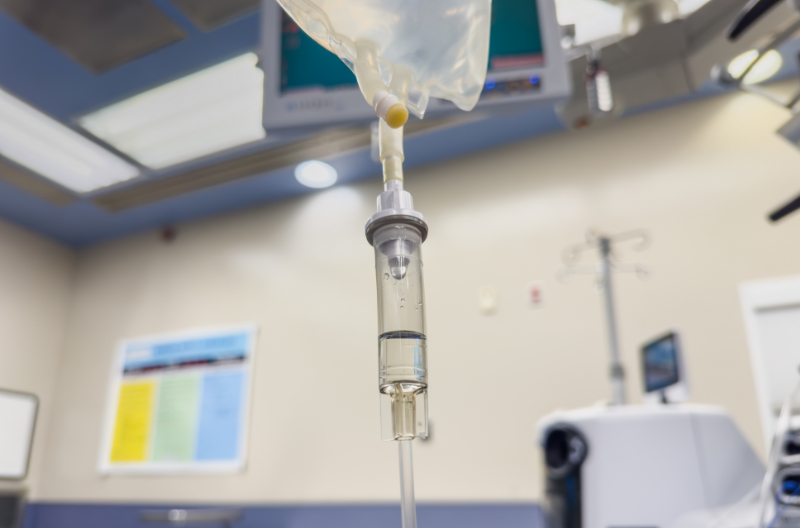A 65 y/o male presents to the ER via ambulance with VF. The ambulance crew started an IV and NS. The patient has an automatic implantable cardioverter defibrillator (AICD) in place, but it is not functional. The healthcare provider wants to start an antiarrhythmic. Which medication is the best choice?
- Norepinephrine
- Lidocaine
- Dopamine
- Amiodarone
Rationale:
Amiodarone is for the management of life-threatening recurrent VF or hemodynamically unstable VT and cardiac arrest. It is commonly used for VF pulseless and VT unresponsive to shock delivery and CPR. It is an antiarrhythmic.
The initial bolus dose of amiodarone for life-threatening VF or unstable VT is 20 mg IV push.
- True
- False
Rationale:
The dosing is standard for all patients with a 150 mg/100 ml D5W (1.5 mg/ml) bolus over ten minutes. The bolus may be repeated if needed. A 300 mg bolus, diluted in 100 ml D5W over 10 minutes, may also be used for VF, VT, and cardiac arrest unresponsive to CPR.
A continuous drip infusion follows an amiodarone 300 mg bolus. The amiodarone drip will infuse for _______hours before transitioning to oral Cordarone.
- 72
- 48
- 24
- 36
Rationale:
A 300 mg bolus, diluted in 100 ml D5W over ten minutes, may also be used for VF, VT, and cardiac arrest unresponsive to CPR. The drip is mixed 450 mg/250 ml D5W and runs at 1 mg/min (33 ml/hr) for six hours, then 0.5 mg/min (16 ml/hr) for 18 hours with a transition to oral Cordarone after the drip is discontinued. The total time is 24 hours.
Many vasoactive medications have serious side effects. Which medication puts the patient at risk for a thyroid storm?
- Nipride
- Diltiazem
- Amiodarone
- Adenosine
Rationale:
It has a 53-day half-life. It can cause hypotension, bradycardia, ectopy and arrhythmic events, peripheral neuropathy, thyroid dysfunction, thyroid storm, nausea, vomiting, and pulmonary toxicity.
A patient on an amiodarone drip exhibits signs and symptoms of thyroid dysfunction. The amiodarone drip is discontinued. The patient's vital signs are stable. The first dose of Cordarone is due in 12 hours. Which of the following should the nurse do?
- Administer Cordarone as scheduled.
- Monitor the heart rate.
- Restart the drip.
- Do not administer Cordarone.
Rationale:
Cordarone is amiodarone and may cause a thyroid storm. The amiodarone infusion has a long half-life of 53 days. Another antiarrhythmic should be ordered.
Rationale:
Use caution in older adults, as a complete heart block can occur. It can also cause confusion, hypotension, lightheadedness, diplopia, seizures, and tinnitus.








